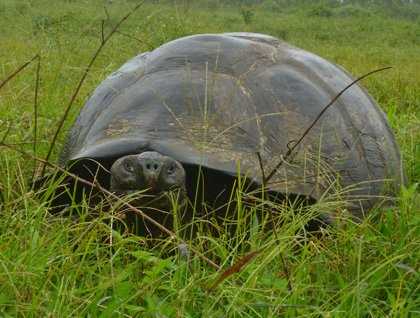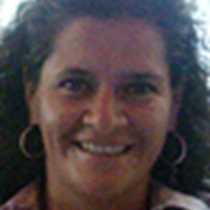As we arrived to the dock of Puerto Ayora, Santa Cruz Island, the home of the largest tortoises that inhabit Galapagos, we are were surprised by the activity of the town. It seemed like everyone on the streets had something to do and most people were rushing to their jobs. It pretty much felt like a big city anywhere in the world. We boarded our bus and headed off for the Charles Darwin Research Station.
Several Darwin’s finches moved from tree to tree, perhaps looking for a mate, or maybe for food. The walkway was lined with interesting cacti, opuntia of different sizes. We were excited to see the Española tortoises, which are the species of tortoises that started the captive breeding program, as well as the saddleback tortoises, because most of the tortoises that we will be seeing in the wild have a dome shaped shell.
The program started back in the 1960s with the Española sub species, which were driven almost to extinction due to the presence of introduced goats and donkeys on the island. These introduced mammals will forage all of the vegetation, leaving the tortoises not only without food but also without shelter. After years of research and hard work, the programs have been a 100% success; today over three thousand young tortoises have been repatriated to their islands of origin and are now reproducing in the wild without human intervention. The Galapagos National Park Service, together with the Charles Darwin Foundation are today some of the most respected conservation institutions in the world.
In the afternoon we travelled up to the highlands, where we were surrounded by tortoises in the wild. We had the opportunity to spend lots of time among them, taking pictures of these magnificent creatures that did not seemed to get bother by our presence. It was amazing to see them in their natural habitat. Walking with this incredible friendly creatures made us feel as if we had been transported back in time, hundreds of years ago, when the tortoises roamed the islands by themselves…









